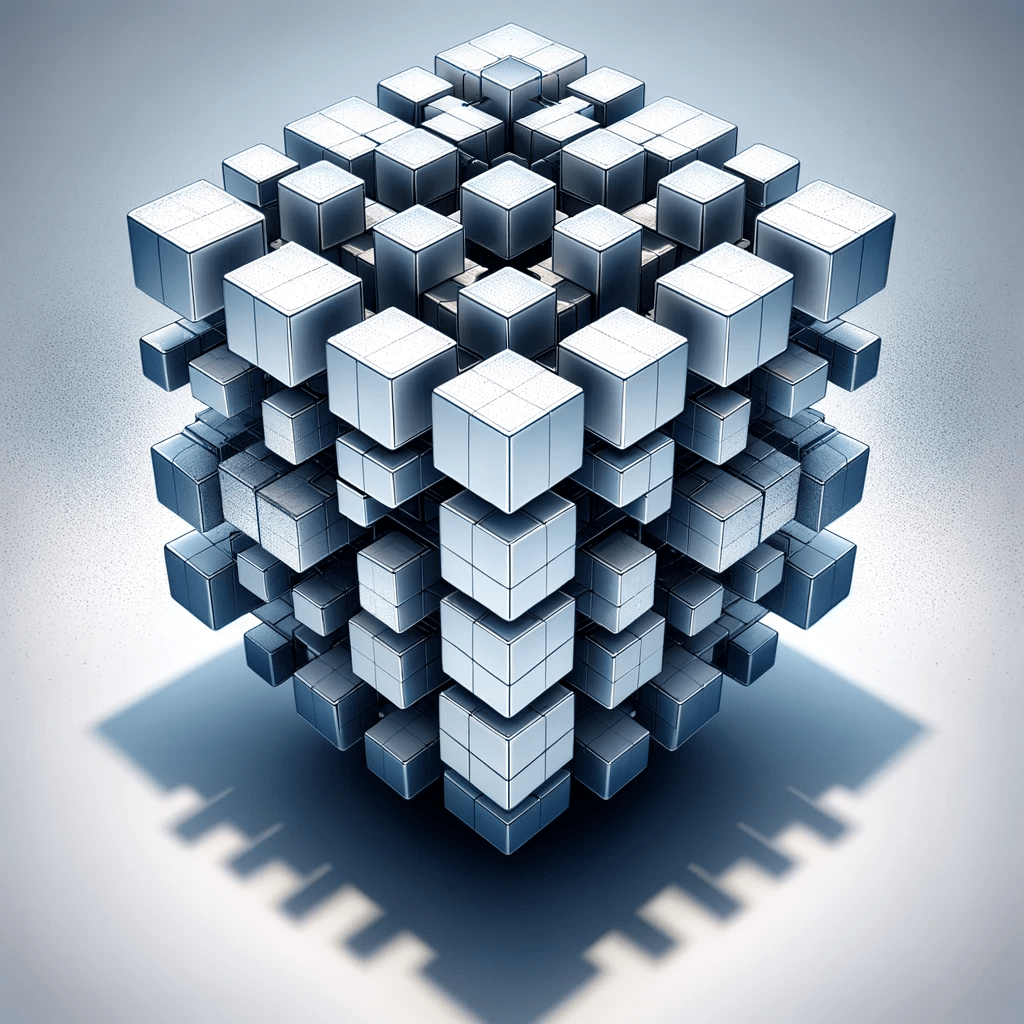Hypercube

In the complex world of multi-dimensional geometry, a term that stands out is “hypercube.” This mathematical concept, initially introduced by mathematicians in the 19th century, pushes our understanding of space and form beyond the familiar three dimensions of length, width, and height. While the language of mathematics allows for the exploration of an infinite number of dimensions, the human mind typically struggles to visualize anything beyond the third dimension. Despite this, the mathematical abstraction of hypercubes is integral to fields like theoretical physics, computer science, and complex data analysis.
A hypercube, often called an “n-cube” or “measure polytope,” is a geometric concept that exists in n-dimensional space. In this context, ‘n’ represents the number of dimensions. For example, a 1-cube is a line segment, a 2-cube is a square, and a 3-cube is what we commonly understand as a cube. Each subsequent n-cube is constructed by connecting two copies of the (n-1)-cube at their corresponding vertices.
To illustrate, imagine a point. This point, which is dimensionless, can be considered a 0-cube. If you stretch this point into a line, you have a 1-cube or a line segment, defined by two points (0-cubes). Stretch this line perpendicular to itself and you have a 2-cube, a square defined by four line segments (1-cubes). Now, take this square and stretch it perpendicular to the plane it exists in, and you create a 3-cube or a standard cube, which is bounded by six squares (2-cubes). Continuing this process, a 4-cube or a tesseract is a figure bound by eight cubes (3-cubes), formed by stretching a cube into the fourth dimension.
Mathematicians often use the term “tesseract” for a 4-cube or a 4-dimensional hypercube. This terminology was introduced by Charles Howard Hinton in his 1888 book “A New Era of Thought” (Source: “A New Era of Thought” by Charles Howard Hinton).
The idea of higher dimensions is not just theoretical. Physicists like Michio Kaku, a renowned theoretical physicist and futurist, suggest that our universe may actually consist of multiple dimensions beyond the three spatial dimensions and one temporal dimension we can perceive. He discusses this extensively in his book, “Hyperspace: A Scientific Odyssey Through Parallel Universes, Time Warps, and the 10th Dimension” (Source: “Hyperspace” by Michio Kaku).
Hypercubes also have a practical role in digital data storage. They represent a common topology in high-performance computing and parallel processing because they allow for efficient data routing and communication (Source: “Introduction to Parallel Computing” by Ananth Grama, Anshul Gupta, George Karypis, and Vipin Kumar).
Mathematician and professor Ian Stewart, in his book “Flatterland,” looks into higher dimensions and the concept of hypercubes. Stewart explains how such multidimensional shapes, though abstract and challenging to visualize, are crucial in the understanding and modeling of complex physical and mathematical phenomena.
The fascination with hypercubes extends into popular culture, for example, in the film “Interstellar,” directed by Christopher Nolan, a tesseract is used to portray a four-dimensional space. This serves as an imaginative interpretation rather than a precise scientific depiction, given the inherent limitations of visualizing higher dimensions in a three-dimensional medium.
The hypercube has proven to be an indispensable tool in the field of computational data structures, where binary trees can be generalized into multi-dimensional trees, called k-d trees. In these structures, nodes represent hypercubes in the data space, an approach used for optimizing search and sorting algorithms (Source: “Data Structures and Network Algorithms” by Robert Endre Tarjan).
In theoretical physics, the exploration of hypercubes and other multi-dimensional shapes has played a crucial role in the development of string theory and the idea of a multiverse. In these fields, hypercubes are part of the mathematical language used to describe the fabric of the universe, and their study may offer insights into the nature of space and time (Source: “The Elegant Universe” by Brian Greene).
Our observable universe appears to be three-dimensional (length, width, and height), plus an additional dimension for time, following Einstein’s conception of spacetime as a four-dimensional construct.
Theories in modern physics, such as string theory, do propose that additional dimensions may exist beyond the four we can perceive. These theories suggest that the additional dimensions are compactified, or folded in on themselves, at such small scales that we cannot directly observe them.
While understanding the concept of hypercubes can be a mental challenge, it invites us to push beyond the limits of our sensory perception and explore a world not bounded by three dimensions. The hypercube represents a bridge between the perceivable and the abstract, illuminating the potential complexities of the universe, and offering new ways to structure data and understand reality.


